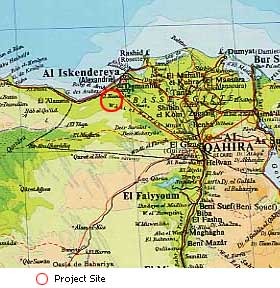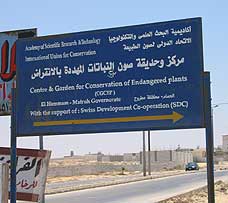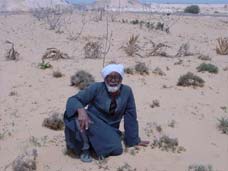| Egypt
Most Egyptians rely on modern medicines, though herbalists and their shops are still thriving. The Bedouins, with a much stronger traditional culture, have a real interest in medicinal plants – they collect and use them. There is a big demand for medicinal plants in Egypt, but most of this is for export to the USA and Europe.
Of the 2000 species of plants in Egypt, 1000 occur within 30 km of the Mediterranean coast. A large number of Egypt's plants have become rare or extinct, however, due to habitat destruction, overgrazing, and over harvesting.
The project site in Egypt is located near the coast, west of Alexandria, in the El Omayed Protectorate and extends up to the Libyan border. The major part of the area is bordered by sand dunes.

The emphasis of the Programme in Egypt is on the multiplication of medicinal plants and on collecting ethnobotanical information from the Bedouins. The stakeholders involved are diverse: Bedouins, teachers, NGO members and scientists. The implementing agencies are the Academy of Scientific Research and Technology and the University of Cairo, and the National Coordinator is Prof Kamal Batanouny.
A Centre has been built with a garden near El Hammam, to conserve useful plants currently under threat in the region. Cultivation techniques are tested and used in micro-nurseries established by Bedouin communities. The Centre also serves for education and awareness raising.

Four micro-nurseries, established with the Bedouin communities on their lands, along with around twenty smaller ones, focus on the sustainable use of medicinal plants. The cultivation of these plants is a new concept for the Bedouins, and has slowly caught on, due to both a diminishing of availability of plants from the wild, and the realization that a market can be found for both medicinal and culinary uses. These nurseries have been a decisive factor in significantly reducing the uncontrolled gathering of endangered plant species. They raise awareness and provide medicinal plants for local needs and hard-to-find plants for the Garden.

The Bedouins possess invaluable knowledge of nature and specifically desert plants. This traditional knowledge is being gathered and documented and fed into the regional compendium on medicinal plants. A number of publications and leaflets on the plants have also been produced.
Phytochemical research is being carried out in Cairo to determine which compounds are responsible for which medicinal actions. Investigations are also underway on the status and distribution of, and threats to medicinal plants in the project area. Endemic species have been identified.
A new NGO, the Egyptian Society for Curing with Herbs and Medicinal Plants, has been created with researchers, herbalists and healers to help implement the project.
|


